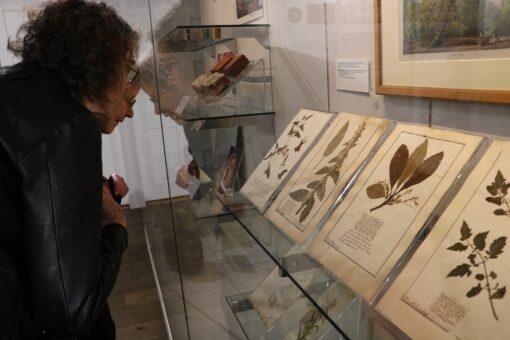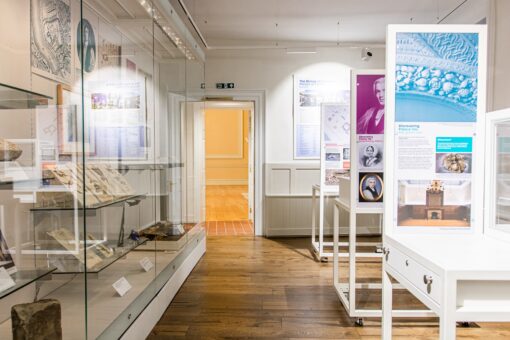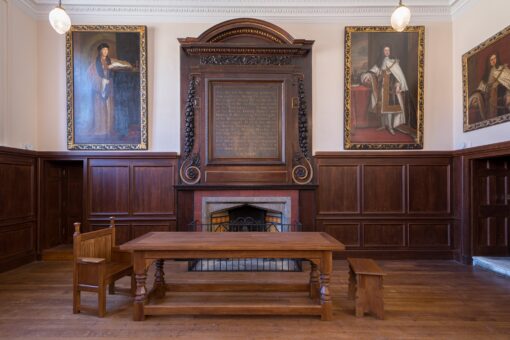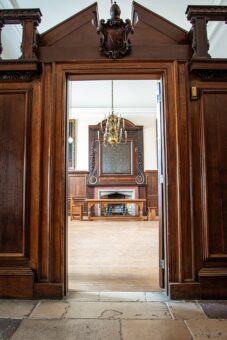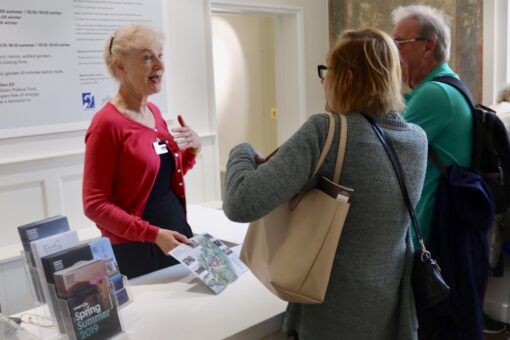Fulham Palace
Bishop’s Avenue, Fulham, London SW6 6EA

The captivating history of Fulham Palace spans over 1,300 years and 133 Bishops of London. The site has been a residence of the Bishops of London since AD 704, when Bishop Waldhere acquired the Manor of Fulham.
During the mid-13th century the original manor house was abandoned. The foundations of the current house start at this time. Over the past 750 years the house has evolved as different Bishops carried out building works, from remodelling the great hall to demolishing the Tudor state wing. This has created an interesting mixture of architectural styles which reflect changing fashions and the differing needs of the Bishops and their families.
The Bishops of London used the Palace primarily as a summer retreat away from the crowded and dirty city. It was also a place to entertain important visitors, including royalty. Queen Elizabeth I was guest of honour at a lavish banquet in 1601. Over 150 years later King George III was treated to a simpler affair — breakfast.
After the English Reformation in the 16th century clergy were allowed to marry and Fulham Palace became a family home. In the 19th century the Bishops and their wives began to share the house and garden more with the community, hosting large parties and church pageants.
In 1918 a hospital for wounded soldiers occupied much of the house. During the Blitz in 1940 two hundred people stayed for several nights after their homes were destroyed by bombs.
Bishop Stopford was the final Bishop of London to live at Fulham Palace, leaving in 1973.
Important information: opening info is generated by artificial intelligence; check specific attraction details before travelling.
The indicator above will show ‘open’ when the public have any kind of access to any part of this property. That could be the park, a shop, or a special event, and may not reflect regular admission times to the main attraction. Always consult the website of the house or garden you intend to visit before travelling to check that the attraction you are interested in is open.
The museum and historic rooms are open daily, 10.30 – 16.00
Café: 9.30 – 17.00.
Shop: 10.30 – 17.00.
Botanic garden: dawn – 18.00.
Walled garden: 10.15 – 16.15.
Tickets can be booked in advance on our website here.
The museum is free to visit. Guided tours are charged.
Admission to the museum, historic rooms and garden is free to all.
In addition, Historic Houses members enjoy free tickets on scheduled guided tours.
Typical tour tickets start at £8 for non-members.
See details of tours here.
Victorian costumes, Roman object handling, scientific discovery of materials and plants — Fulham Palace offers your class a powerful learning experience in one of Britain’s most important historic sites.
We offer a variety of hands-on sessions for Early Years, KS1 and KS2, all with links to the Early Years Framework and National Curriculum.
As well as offering sessions at the Palace, we’ve made resources which bring the Palace to your classroom or directly to your students at home.
For early years we offer bespoke sessions to ensure learning at school is supported here at Fulham Palace.
For secondary schools we offer flexible sessions both on-site and through outreach programmes. Individual topics and cross-curricular days can be arranged. All topics include costume, archive material and resources where appropriate.
We can accommodate up to 30 children per session. Morning sessions begin at 10.00 and afternoon sessions at 13.00.
Booking for all sessions is essential. Full details of all our school sessions are available on our website.
Contact [email protected] for more info.
Image credits to Fulham Palace, Giselle Brosnahan, Graham Lacdao and Ruxi.

